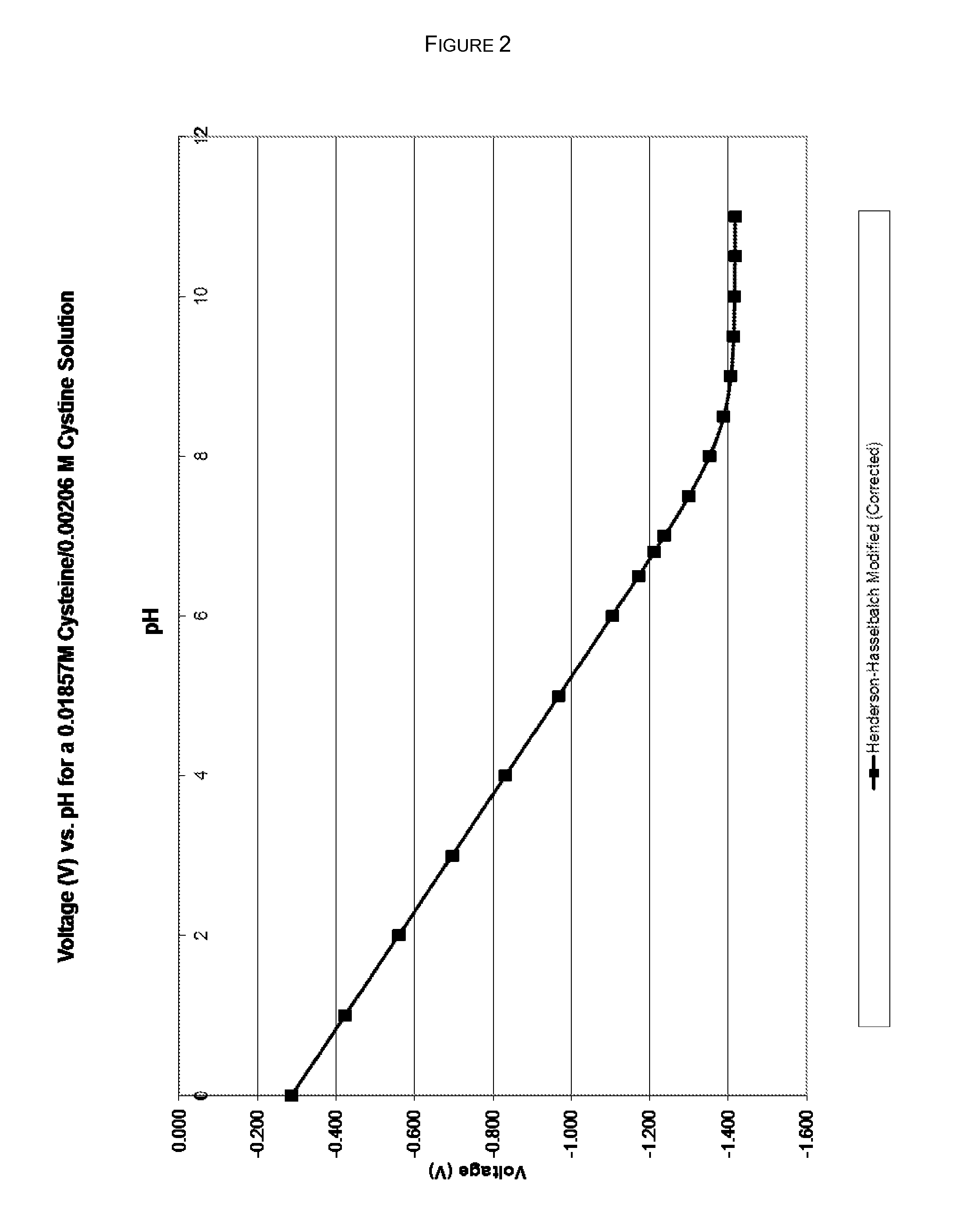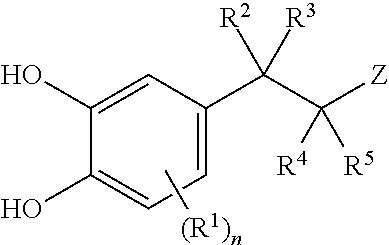Stabilization of quinol composition such as catecholamine drugs
a technology of catecholamine drugs and quinols, applied in the direction of drug compositions, biocide, amide active ingredients, etc., can solve the problems of compromising effectiveness, undesirable costs, and further chemical degradation, and achieve the effect of stabilizing the quinol compound and the quinol compound
- Summary
- Abstract
- Description
- Claims
- Application Information
AI Technical Summary
Benefits of technology
Problems solved by technology
Method used
Image
Examples
example 1
Stabilization of Epinephrine
[0106]This example describes stabilization of epinephrine, a quinol compound, in the presence of a thiol agent (cysteine) and a pH buffer that maintains a substantially constant pH. All reagents are available from Sigma-Aldrich (St. Louis, Mo.).
[0107]Under aseptic conditions a sterile aqueous solution of 15 mM sodium phosphate-pH 6.8 is prepared by admixing appropriate quantities of 15 mM NaH2PO4 and Na2HPO4. Into the sodium phosphate solution solid epinephrine bitartrate powder is dissolved to achieve a final epinephrine concentration of 1.0 mg / mL. The solution is divided into two equal portions and to one portion is added crystalline cysteine to a final concentration of 2.5 mg / mL. An aliquot of each solution is taken for immediate analysis of epinephrine degradation and the two solutions are immediately stored in the dark at room temperature in containers having airtight seals; the time is noted as the zero time point (t0). At time points of 0, 1, 3, 7,...
example 2
Stabilized Epinephrine for Pharmaceutical Injection
[0108]A stabilized epinephrine formulation is compounded using the following methodology. Epinephrine bitartrate is added to a volumetric container to give a final concentration of 1.0 mg / ml of epinephrine base. Next, a sufficient quantity of cysteine is added to give a final concentration of 2.5 mg / ml. Next, sodium phosphate monobasic (NaH2PO4) and sodium phosphate dibasic (Na2HPO4) are added to the vessel in an equal molar ratio to give a final concentration of 15 mM. Next, a sufficient quantity of chlorobutanol (as an antimicrobial agent) is added to give a final concentration of 5.0 mg / ml. Next, Ethylenediaminetetraacetic Acid (EDTA) disodium is added to give a final concentration of 0.1 mM. The vessel is well mixed and water for injection (WFI) that has been previously sparged with an inert gas such as helium, argon, or nitrogen is added to the vessel in sufficient quantity to fill it to seventy-five percent of its final volume...
example 3
Stabilized Epinephrine and Local Anesthetic Compound for Pharmaceutical Injection
[0109]A stabilized epinephrine formulation containing a local anesthetic comprising of at least one amine group that is capable of being reversibly protonated is compounded using the following methodology. Lidocaine hydrochloride is added to a volumetric container to give a final concentration of 10 mg / ml. Next, epinephrine bitartrate is added to the volumetric container to give a final concentration of 0.010 mg / ml of epinephrine base. Next, a sufficient quantity of cysteine is added to give a final concentration of 2.5 mg / ml. Next, sodium phosphate monobasic (NaH2PO4) and sodium phosphate dibasic (Na2HPO4) are added to the vessel in an equal molar ratio to give a final concentration of 15 mM. Next, a sufficient quantity of chlorobutanol (as an antimicrobial agent) is added to give a final concentration of 5.0 mg / ml. Next, Ethylenediaminetetraacetic Acid (EDTA) disodium is added to give a final concentr...
PUM
| Property | Measurement | Unit |
|---|---|---|
| Fraction | aaaaa | aaaaa |
| Fraction | aaaaa | aaaaa |
| Fraction | aaaaa | aaaaa |
Abstract
Description
Claims
Application Information
 Login to View More
Login to View More - R&D
- Intellectual Property
- Life Sciences
- Materials
- Tech Scout
- Unparalleled Data Quality
- Higher Quality Content
- 60% Fewer Hallucinations
Browse by: Latest US Patents, China's latest patents, Technical Efficacy Thesaurus, Application Domain, Technology Topic, Popular Technical Reports.
© 2025 PatSnap. All rights reserved.Legal|Privacy policy|Modern Slavery Act Transparency Statement|Sitemap|About US| Contact US: help@patsnap.com



